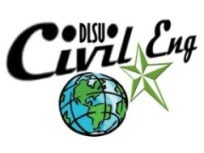 |
| Opening Program Group Photo - 11 Nov 2013 |
The AUN-QA Model for programme level focuses on teaching and learning with regard to the following dimensions: (a) quality of input, (b) quality of process, and (c) quality of output. The AUN-QA criteria has 15 items in the checklist: (1) Expected learning outcomes, (2) Programme specification, (3) Programme structure and content, (4) Teaching and learning strategy, (5) Student assessment, (6) Academic staff quality, (7) Support staff quality, (8) Student quality, (9) Student advice and support, (10) Facilities and Infrastructure, (11) QA of teaching and learning process, (12) Staff development activities, (13) Stakeholders feedback, (14) Output, and (15) Stakeholders satisfaction.
 |
| CE Dept. AUN-QA SAR |
 |
| The CE Department Exhibits with Dr. Fillone, Engr. Gallardo and Dr. Culaba |
 |
| Exhibits on undergraduate thesis and achievers |
 |
| The exhibits highlighted the four specializations of the DLSU BSCE program |
 |
| The AUN-QA Actual Assessment Report on SAR |
On the third day of the actual assessment, lead assessor Prof. Ir. Dr. Shahrir Abdullah presented their findings on Civil Engineering program of DLSU. "The DLSU CE SAR is written in accordance to the manual – the quality is very good," he reported. The strengths and weaknesses of the program were cited. Among the strengths of the DLSU CE Program are: (a) "The program has managed to inculcate skills in life long learning and independence learning, which received commendation from the employers," (b) "Program specification is clearly defined and summarized into brochure, that is usable for marketing of the program," (c) "The program has a clear strategy to deliver teaching and learning process for all courses," (d) "The staff are motivated their duties, maintain a close teacher-learner relation with student, " (e) "The students, particularly those in final year, has already demonstrated some attainment to the program learning outcome
and Lasallian values prior to OJT," (f) "Student’s evaluation on teaching processes has been institutionalizedthrough the ITEO system to provide feedback for curriculum development and review," (g) "The university has provided funding to support academic staff for attending the conferences, locally and abroad," (h) "The graduates and alumni has high reputation and image from employers’ perspective," (i) "Alumni from the CE program has managed to get job within 2 month."
For the weaknesses, he highlighted the ff: (a) "Some technical courses may require more hands-on and practical activities," (b) "In order to stimulate learning among to students, the teaching and learning strategy should be equipped with adequate facilities and laboratory equipment, " (c) "The current ratio of staff-student ratio for the CE program is high, " (d) "As the University envisages to be research oriented university, the
number of hours allocated for academic staff for research should be increased, (e) "Students in earlier years is struggling to understand the meaning of program learning outcomes," (f) "Curriculum development and review should be performed more systematically at defined interval by considering inputs from students and labor market (including alumni and employer) utilizing various techniques apart from surveys," (g) "Clear plan for staff training and development is required in order to address sustainability of the programme in future and quality issues of some services, " (h) "More systematic approaches in gathering stakeholder input is recommended for a more effective curriculum review," (i) "Attrition rate is relatively high."
By addressing the weaknesses highlighted in the AUN-QA actual assessment, the CE department will continue to improve its program and produce quality and socially responsible professionals.



.jpg)





No comments:
Post a Comment